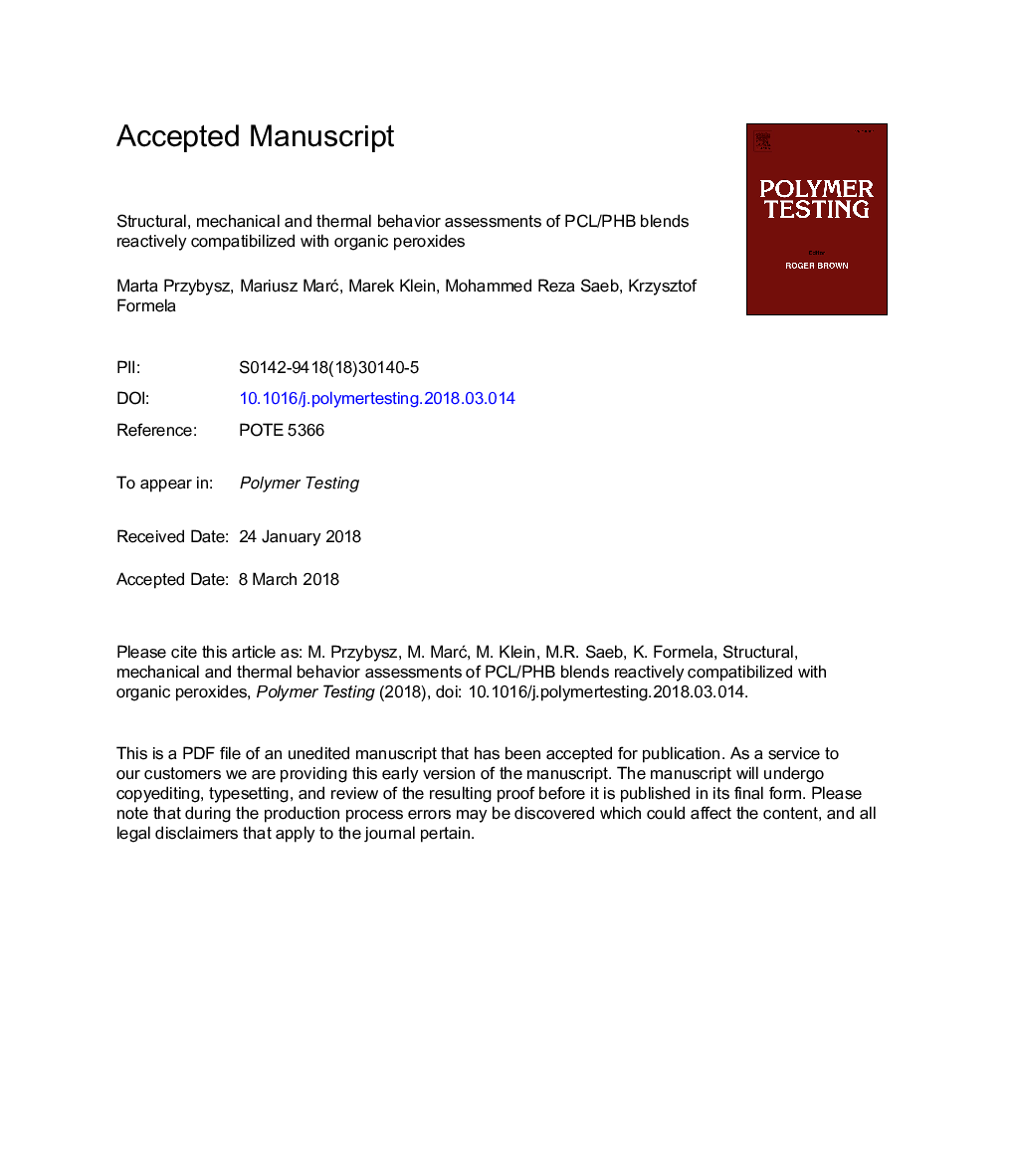| Article ID | Journal | Published Year | Pages | File Type |
|---|---|---|---|---|
| 7825244 | Polymer Testing | 2018 | 24 Pages |
Abstract
The efficiency of two commercially available organic peroxides, dicumyl peroxide (DCP) and di-(2-tert-butyl-peroxyisopropyl)-benzene (BIB), during reactive processing of poly(ε-caprolactone)/poly(3-hydroxybutyrate) (PCL/PHB) blends was investigated. The changes in chemical structure of PCL/PHB blends, as a function of organic peroxide type (DCP/BIB) and content (in range: 0-1.0 parts by weight - pbw), were characterized by Fourier transform infrared spectroscopy, thermogravimetric analysis combined with infrared spectroscopy, and headspace analysis combined with gas chromatography with flame ionization detector. Performance properties of PCL/PHB blends were evaluated based on differential scanning calorimetry, dynamic mechanical analysis, tensile tests, gel fraction behavior and rheological measurements. It was found that, the tensile strength and elongation at break of PCL/PHB blend modified by 0.5 pbw of BIB improved significantly by â¼45% and â¼240%, respectively. Similar changes in the mechanical properties were observed for PCL/PHB blend with 1.0 pbw of DCP. This confirms higher compatibility between these two polymers supported by organic peroxides as free-radical initiators, while the lower concentration of BIB is a more efficient solution comparing to DCP. Moreover, the emissions of volatile organic compounds from reactively blended aliphatic polyesters were investigated. The results indicate that generated degradation products can react with the free radicals, which consequently affects the structural, mechanical and thermal properties of PCL/PHB blends.
Keywords
Related Topics
Physical Sciences and Engineering
Chemistry
Organic Chemistry
Authors
Marta Przybysz, Mariusz MarÄ, Marek Klein, Mohammed Reza Saeb, Krzysztof Formela,
